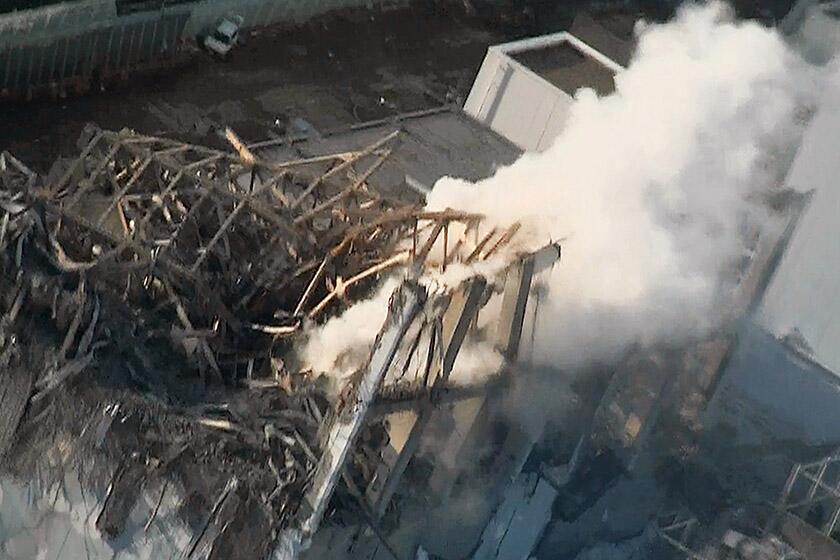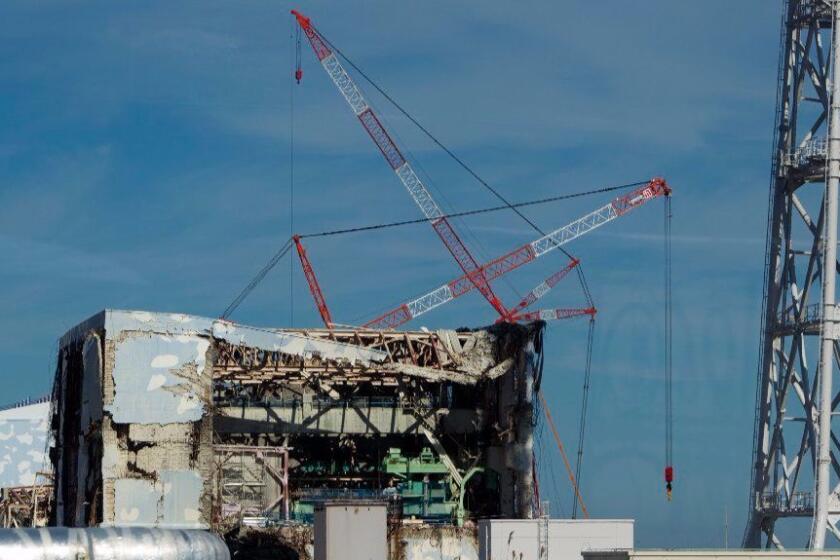‘At the starting line again’: Survivors still struggle to recover from 2011 quake, tsunami
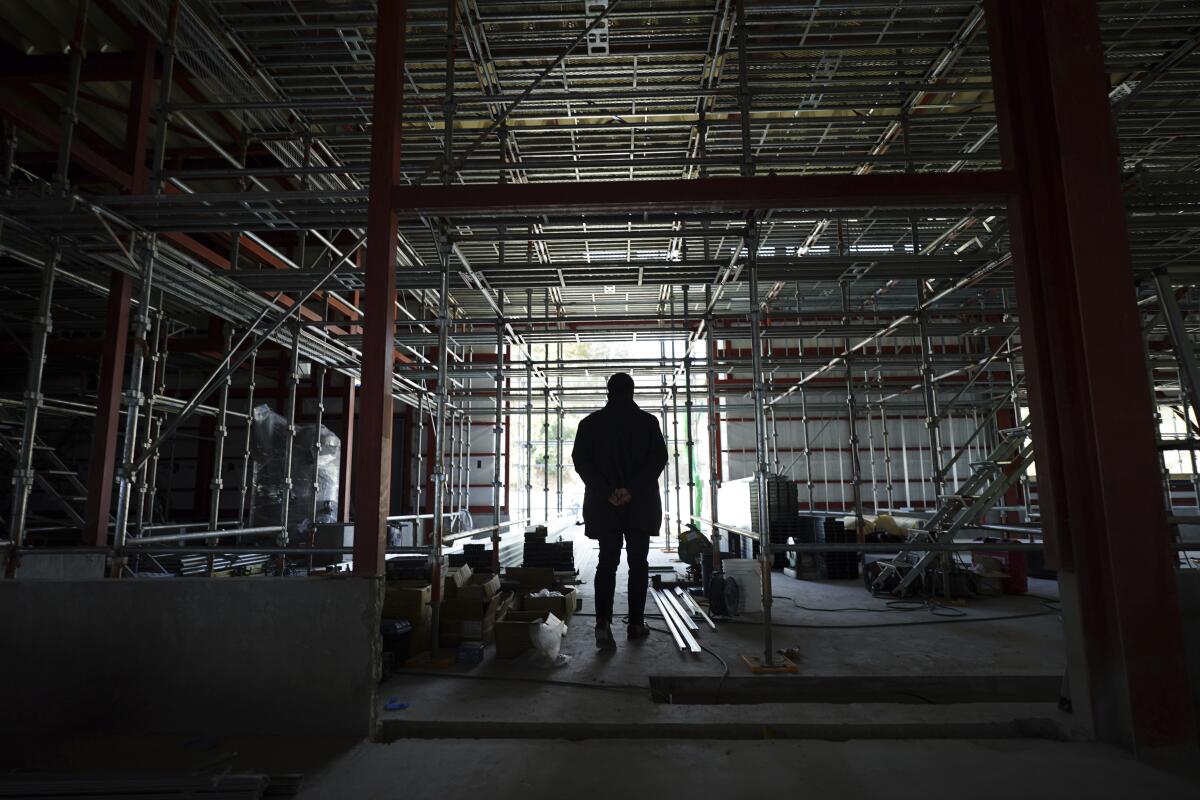
- Share via
TOMIOKA, Japan — Ten years after Japan’s earthquake, tsunami and nuclear disaster, the lives of many who survived are still on hold.
On March 11, 2011, one of the biggest temblors on record touched off a massive tsunami, killing more than 18,000 people and setting off catastrophic meltdowns at the Fukushima Daiichi nuclear plant. Nearly half a million people were displaced. Tens of thousands still haven’t returned home.
More than $280 billion has been spent on reconstruction so far — but even Reconstruction Minister Katsuei Hirasawa acknowledged recently that, while the government has charged ahead with new buildings, it has invested less in helping people to rebuild their lives by, for instance, offering mental health services for trauma.
The Associated Press talked to people affected by the disasters about how far they have come — and how much more needs to be done.
‘As long as my body moves’
Yasuo Takamatsu, 64, lost his wife, Yuko, when the tsunami hit Onagawa, in Miyagi prefecture.
He has been looking for her ever since.
A Japanese court on Thursday ruled that three former executives for Tokyo Electric Power Co. were not guilty of professional negligence in the 2011 Fukushima nuclear plant meltdown.
He even got his diving license to try to find her remains, and for seven years he has gone on weekly dives — 470 and counting.
“I’m always thinking that she may be somewhere nearby,” he said.
Besides his solo dives, once a month he joins local authorities as they conduct underwater searches for some 2,500 people whose remains are still unaccounted for across the region.
Takamatsu said the city’s scars have largely healed, “but the recovery of people’s hearts ... will take time.”
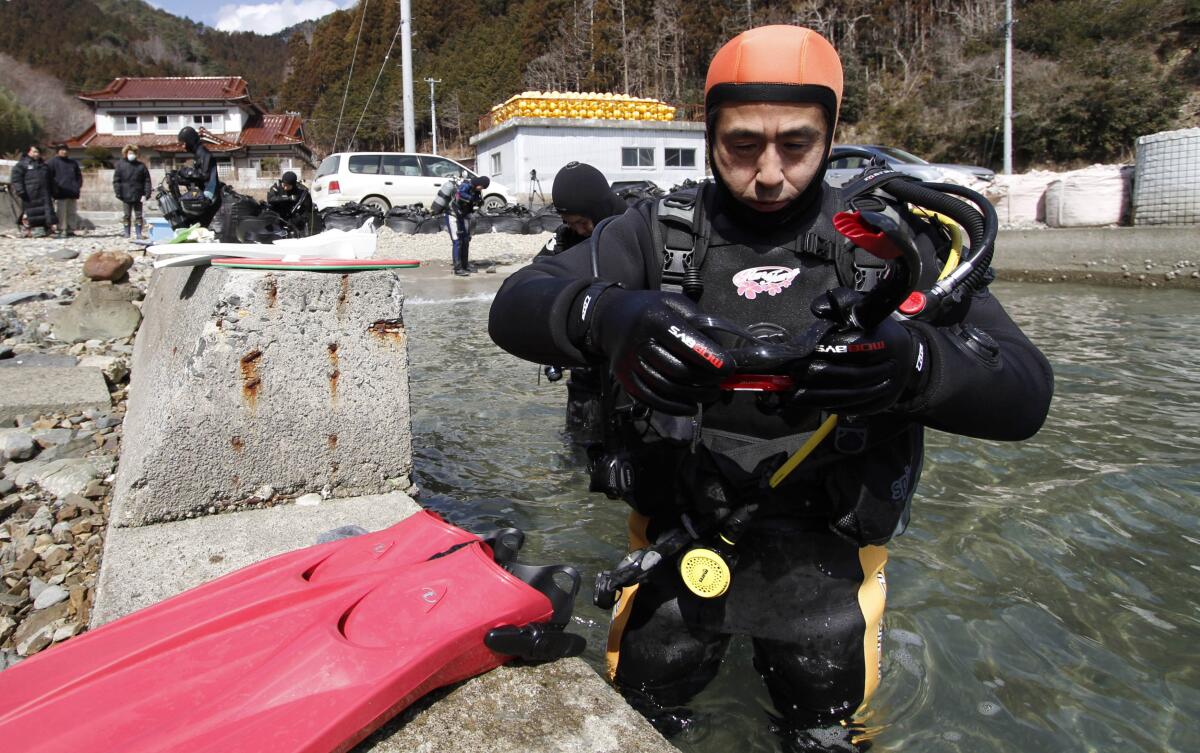
So far, he has found albums, clothes and other artifacts, but nothing that belonged to his wife.
He said he will keep searching for his wife “as long as my body moves.”
“In the last text message that she sent me, she said, ‘Are you OK? I want to go home,’” he said. “I’m sure she still wants to come home.”
‘At the starting line again’
Just a month after a tsunami as high as 55 feet smashed into the city of Rikuzentakata, Michihiro Kono took over his family’s soy sauce business.
That he was even able to continue the two-century-old business is a miracle, he says. The precious soy yeast was saved only because he had donated some to a university lab.
For the last decade, Kono has worked to rebuild the business in Iwate prefecture, and later this year he will finish construction on a new factory, replacing the one that was destroyed, on the same ground where his family started making soy sauce in 1807. He has even launched a soy sauce named Miracle in honor of the saved yeast.
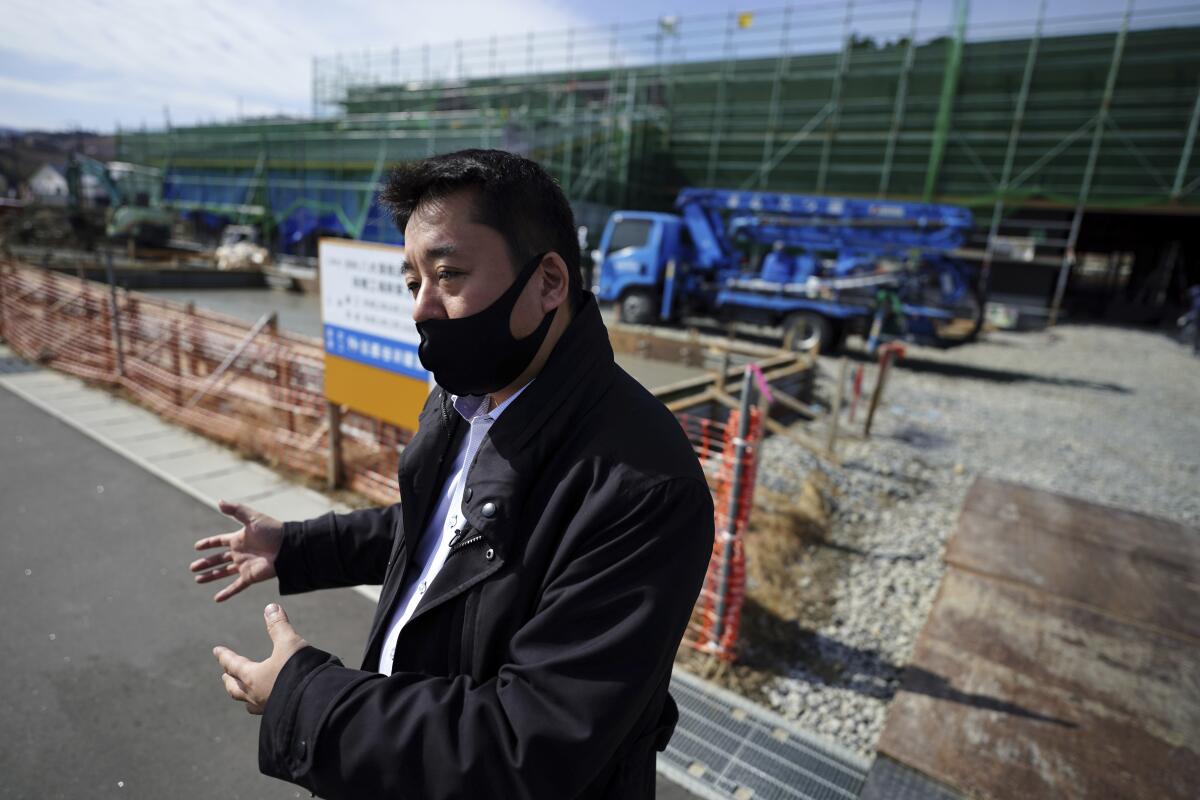
“This is a critical moment to see if I can do something meaningful in the coming 10 years,” said the ninth-generation owner of Yagisawa Shoten Co. “I was born here, and now I’m at the starting line again.”
But challenges remain. His customer base has been decimated. The city’s population has plunged more than 20% to about 18,000, so he is trying to build business networks beyond the city.
Kono often thinks of the people killed by the tsunami, with many of whom he used to discuss town revitalization plans.
“Those folks all wanted to make a great town, and I want to do things that will make them say, ‘Well done, you did it,’ when I see them again in the next life,” he said.
‘Who wants to come back?’
About six miles south of the wrecked nuclear plant, rice farmer Naoto Matsumura defied a government evacuation order a decade ago and stayed on his farm to protect his land and the cattle abandoned by neighbors.
He’s still there.
Japan and Fukushima plant operator must pay residents $4.5 million after nuclear crisis, court rules
A Japanese court on Tuesday ordered the government and the operator of the Fukushima nuclear plant to pay 500 million yen ($4.5 million) to thousands of area residents and evacuees who were demanding compensation for their livelihoods lost in the 2011 nuclear crisis.
Most of the town of Tomioka reopened in 2017. But dozens of neighboring homes around Matsumura are still empty, leaving the area pitch dark at night.
The Fukushima prefecture town’s main train station got a facelift. A new shopping center was built. But less than 10% of Tomioka’s former population of 16,000 has returned after massive amounts of radioactive material spewing from the plant forced evacuations from the town and other nearby areas. Parts of the town remain off-limits; houses and shops stand abandoned.
“It took hundreds of years of history and effort to build this town, and it was destroyed instantly,” he said. “I grew up here ... but this is nothing like a home anymore.”

Because it took six years to lift the evacuation order, many townspeople found jobs and homes elsewhere. Half of the former residents say they have decided never to return, according to a town survey.
This has been true across the region.
In Tomioka, radioactive waste from decontamination efforts in the town is still stored in a no-go zone.
“Who wants to come back to a place like this?” Matsumura asked. “I don’t see much future for this town.”
For company, Matsumura has several cows, a pony and a family of hunting dogs that help him chase away wild boars. The cows are descendants of those from neighboring farms that he has kept, as a protest, after the government issued an order to destroy thousands because of radiation fears.
March 11 marks the third anniversary of the massive earthquake and tsunami that pummeled Japan, killing more than 20,000 people. Photographers for AFP/Getty Images and Kyodo News revisited the disaster scenes in 2013 to show the changes over the last two years.
This spring, for the first time since the disaster, the 62-year-old farmer plans an experimental rice planting, and to expand his beekeeping efforts.
“I will stay here until the end of my life,” he said.
‘Their home is still here’
Yuya Hatakeyama was 14 when he was forced to evacuate from Tomioka after the disaster.
Now 24, the former third baseman for the Fukushima Red Hopes, a regional professional baseball team, is in his first year working at the Tomioka town hall — but he still hasn’t returned to live in the town, joining the many who commute into it from outside.
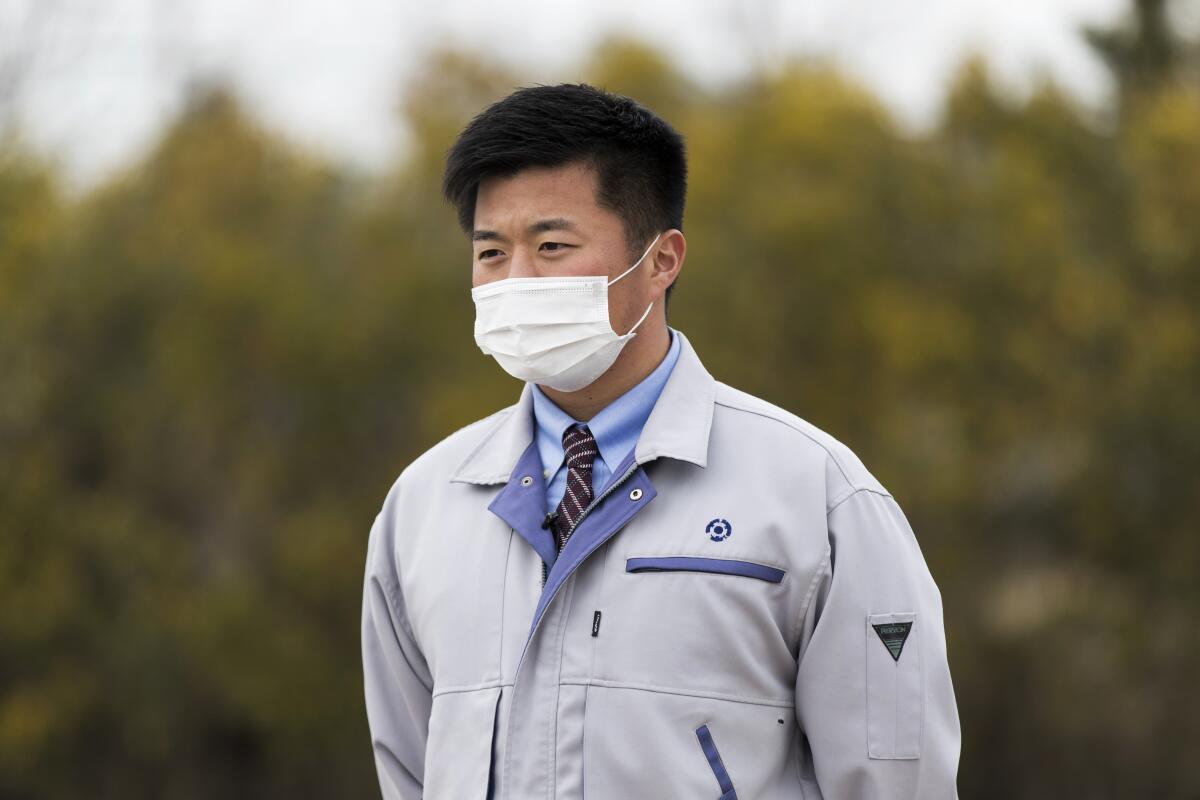
Hatakeyama has bittersweet memories of Tomioka. The area that’s now a no-go zone includes Yonomori park, where people used to gather for a cherry blossom festival. Decontamination work is being stepped up in the area, and the town plans to lift restrictions on the rest of the no-go zone in 2023.
“I want to reach out to the residents, especially the younger generation, so they know their home is still here,” Hatakeyama said. One day, he said, he wants to see young families playing catch, as he and his father did.
‘A place of comfort’
Hazuki Sato was 10 when she fled from her elementary school in Futaba, home of the wrecked nuclear plant.
She’s now preparing for the coming-of-age ceremony that is typical for Japanese 20-year-olds, hoping for a reunion in town so that she can reconnect with her former classmates who have scattered.
Despite horrifying memories of escaping from her classroom, she still considers Futaba her home.

After studying outside the region for eight years, Sato now works for her hometown — though from an office in Iwaki, another city in the Fukushima prefecture.
None of Futaba’s 5,700 residents can return to live there until 2022, when the town is expected to reopen partially. An area outside a train station reopened last March only for a daytime visit to bring in the Olympic torch.
Sato has fond memories of Futaba — a family barbecue, riding a unicycle after school and doing homework and snacking with friends at a day-care center while waiting for her grandmother to pick her up.
“I want to see this town become a place of comfort again,” she said.
More to Read
Sign up for Essential California
The most important California stories and recommendations in your inbox every morning.
You may occasionally receive promotional content from the Los Angeles Times.
